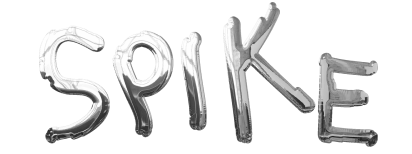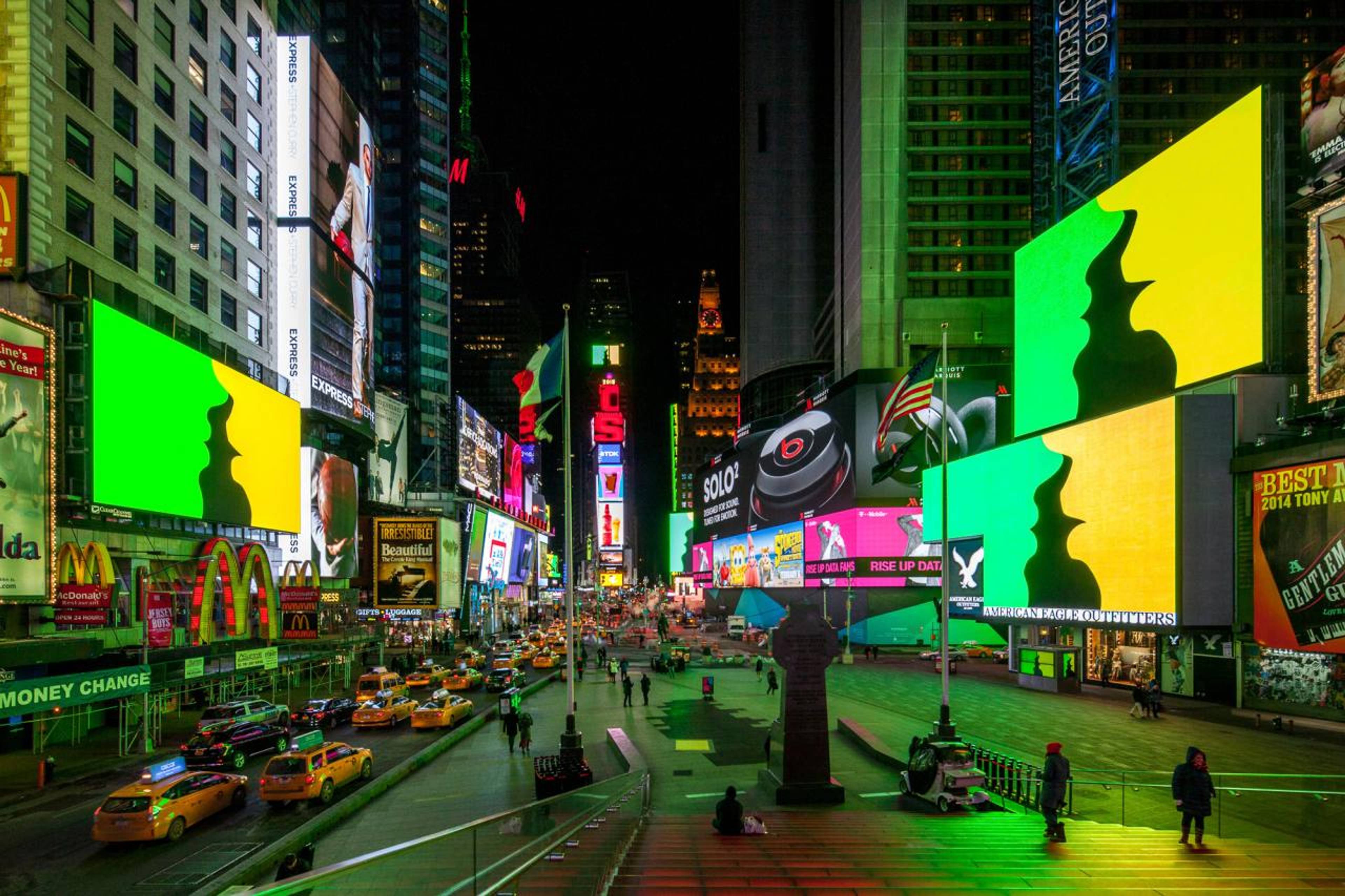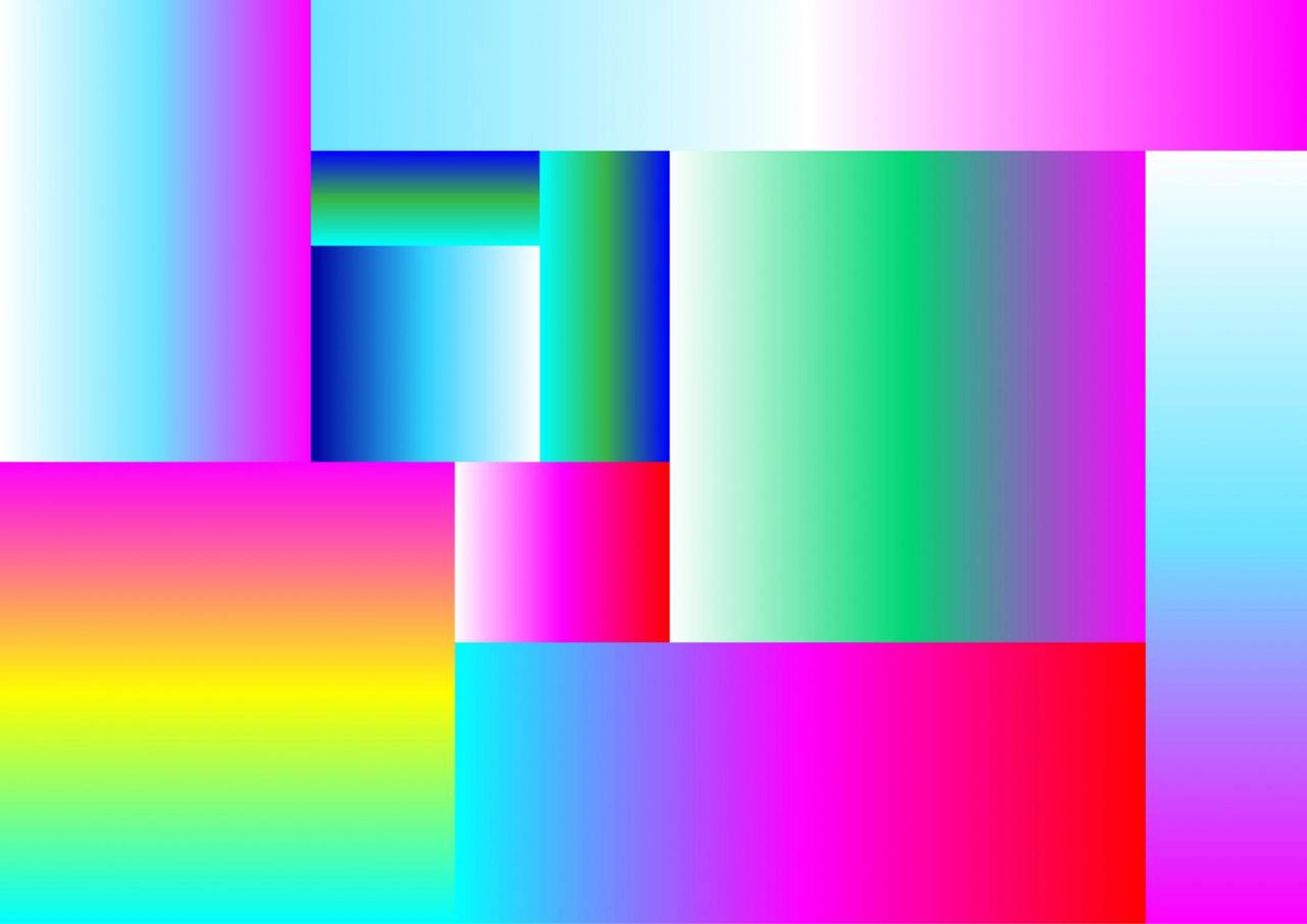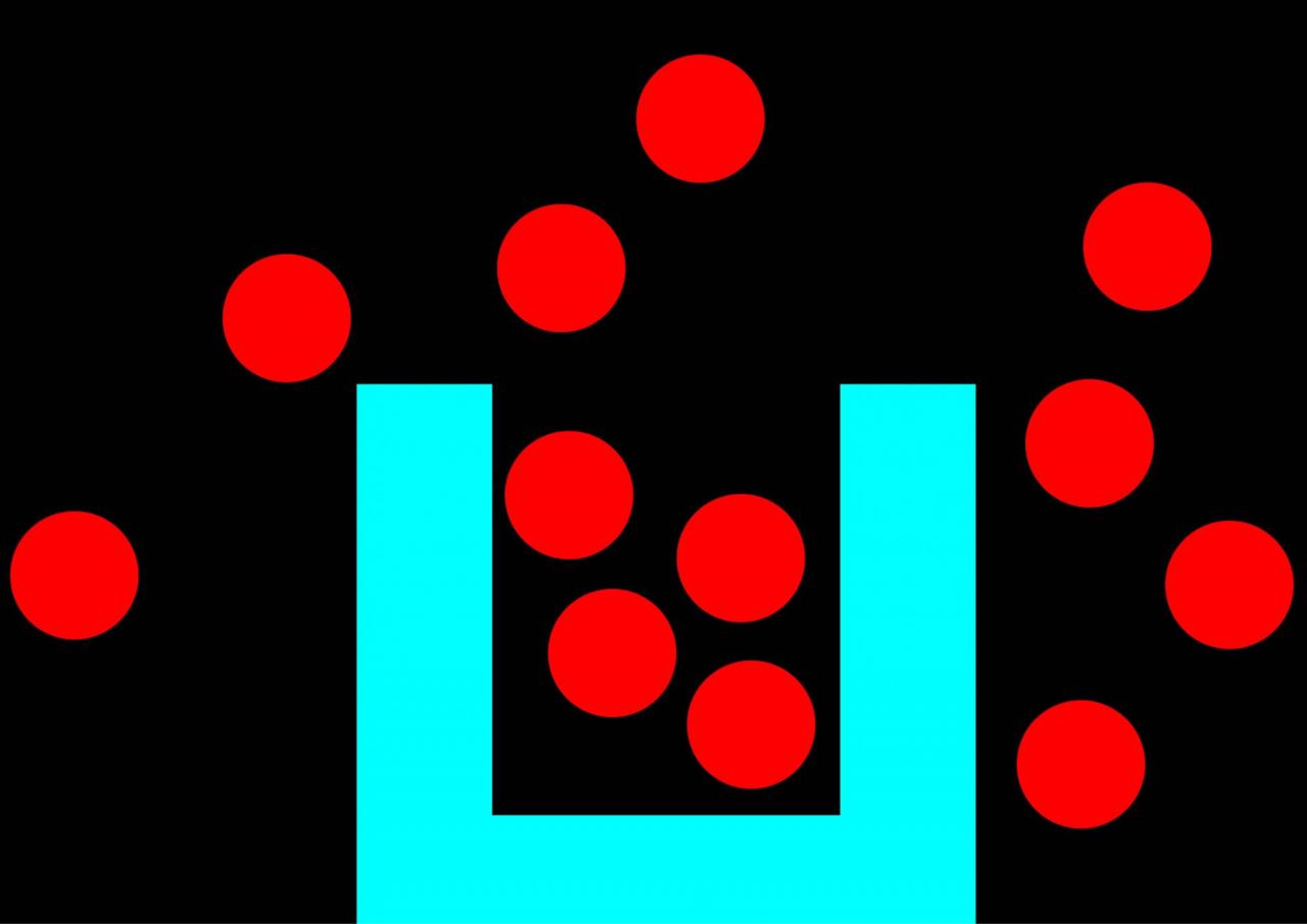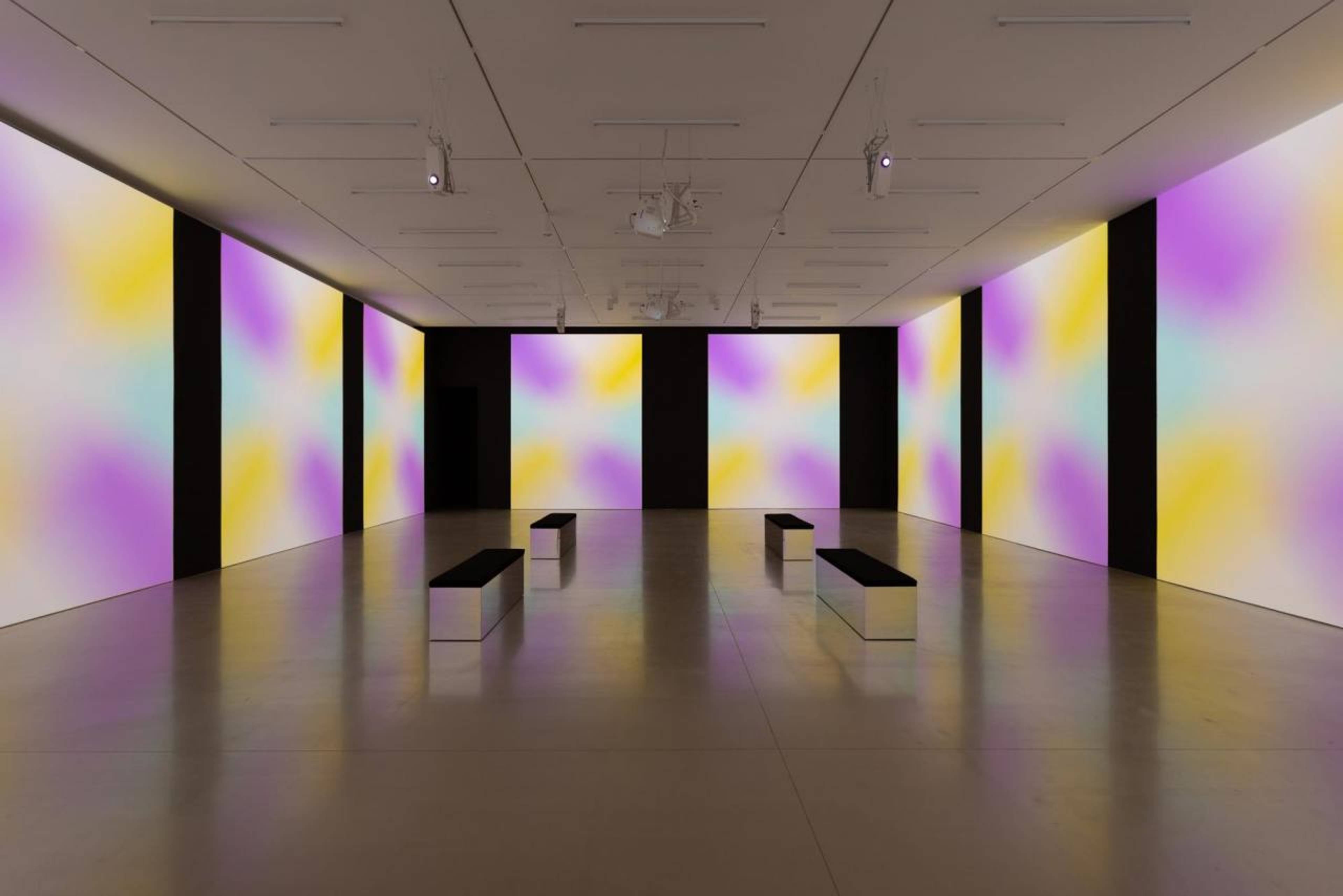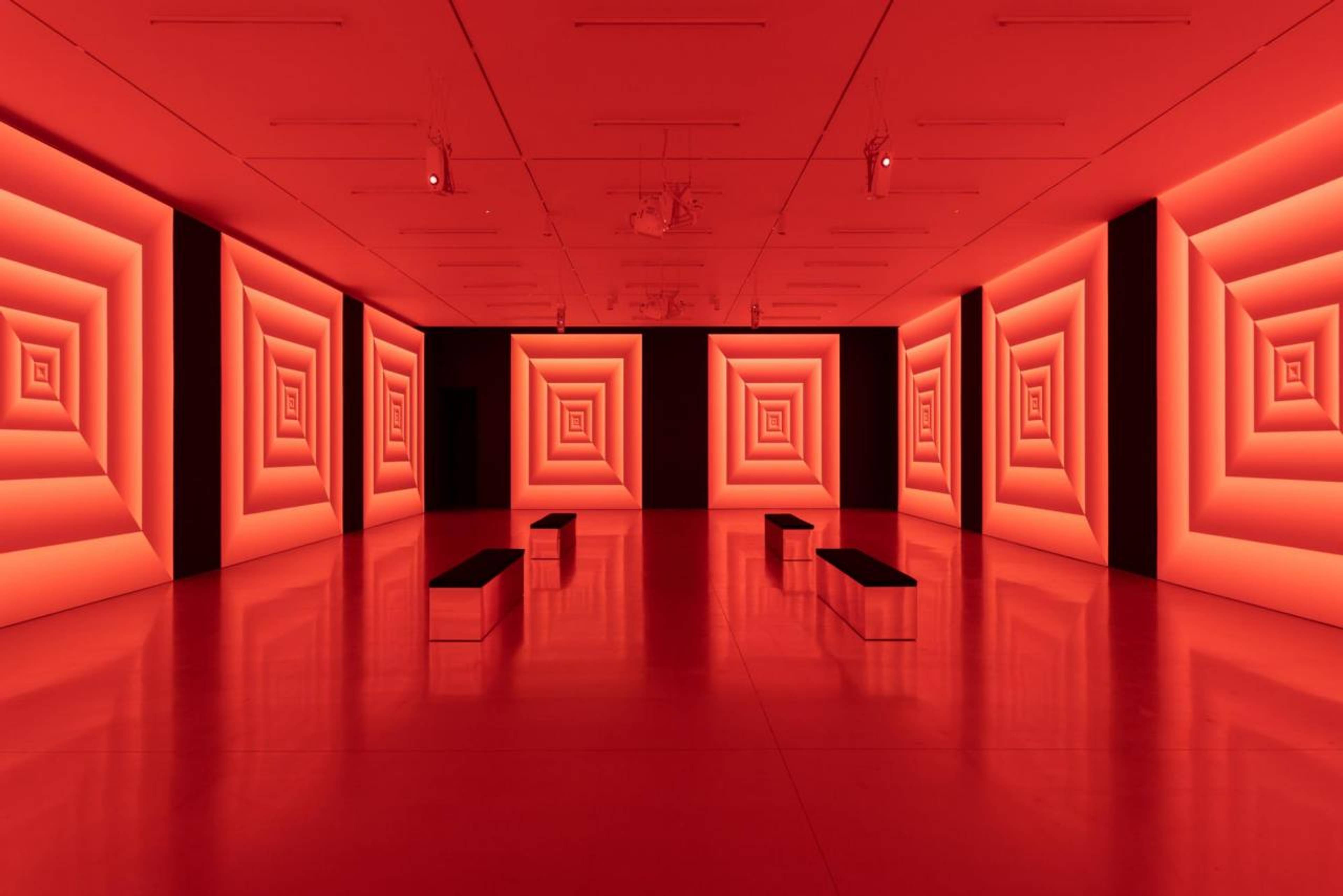Adina Glickstein: What lessons have you learned, throughout your career, about showing net art? Could some of these now be applied to crypto?
Rafaël Rozendaal: I think it’s different for different artists. Cryptoart is often focused on the personal collection, so it’s more of a question of home display. When it comes to physical exhibitions, the goal is not to display works neatly like at an art fair – because their sales are natively digital. So then, why not treat it as a native medium and just go crazy? Don’t be too conservative.
In 2011, I started this platform called Bring Your Own Beamer (BYOB) ; that’s maybe the best answer I have for exhibiting digital art in general. It’s a one-night exhibition where all the artists bring a projector and a computer and everybody just projects whatever. So it’s just an explosion of moving images in a physical space. There’s no control. All you supply is electricity and extension cords. That kind of embraces the chaotic nature of the internet. It’s a very organic experience.
AG: That’s pretty antithetical to the classic idea that everything should come out of these highly-controlled curatorial decisions.
RR: Well, a big part of why I started BYOB is that I saw that curators are so stressed all the time, and I thought, why does exhibition-making have to be so stressful? When it’s just for one night, and it’s more like a happening or performance, then people are less concerned with the details. I don’t know if you can see it in my work, but my background is in this sort of punk mindset – not too precious – DIY. That’s how I grew up: underground comics and xeroxing stuff. And the internet was an extension of that. When we think of zines we think of black-and-white grainy xeroxed stapled paper. Spontaneous and energetic expression doesn’t always have to look like that. You have a quick idea and you multiply it and spread it. So then, in terms of exhibition, maybe something like BYOB is the answer. We’re not going to try to find the perfect screen and the perfect photographer and the perfect whatever else, because it gets in the way of the energy.
AG: It’s also quite different from how people are commonly displaying or handling their personal collections of NFTs – like on a wallet app. Looking at this image on your phone is really accessible and, kind of casual. But then at the same time, it’s so controlled by the platform, so constrained …. It doesn’t feel very DIY or punk to me at all.
RR: NFT collecting feels closer to the way people curate playlists on Spotify or SoundCloud. They love discovering new stuff. The bitrate might be bad, and it might be just a short clip of a song, but it really hits you. And then, maybe later you’ll do some research and buy the .FLAC on Bandcamp and listen it to on better speakers. It could be the same with NFTs.
Maybe a very wealthy collector might have a wing in their house that’s covered in LED screens. But then, one of my collectors who bought a website early on travels a lot for work, and he always puts an iPad in his hotel room displaying one of the websites he owns. So that’s cool. The flexibility creates so many options.
the new generation of NFT collectors is not so in tune with gallery sales culture – they may like art itself, but they don’t like the culture of playing these mind games
AG: What drew you to NFTs after two decades of making websites?
RR: I started making websites in 2000, and I started doing crypto in 2021. In the early 2000s, I was making websites on my computer and publishing them online on a free hosting server. At the time, many people posted experiments online for free. There was no business model. It was experimental exploration of the medium. What could this new medium – the website – do that was unique to its nature? Soon, I started publishing each “experiment” as a single webpage in a unique domain name. The domain name is the title of the work as well as its location. To me, the work did not feel finished until it had its own domain name. The moment of revealing a work to an audience and locking it in place – the domain name – was exciting and satisfying. The domain name was my solution to create digital scarcity and a proof of authenticity: when a collector bought one of my websites, their name would be listed in the title tag of the website, and the domain name is transferred to them. They become the full owner. It was a proto-NFT form.
Rafaël Rozendaal, fearofchoice.com, 2019
Rafaël Rozendaal, lotsofmany.com, 2017
In the end, it kind of worked, but never really exploded the way NFTs did. The idea is the same: a public digital work, authenticated by a scarce digital entity (in this case, the domain name). In the business world, domain names are traded for a lot of money, so I thought this could work for art as well. It was important to me that the work is always publicly accessible yet privately owned. I really liked the idea of the domain name as sort of the root-level control of the internet, instead of it being on platforms (and I think that’s part of why crypto is powerful, too).
Around 2019, I stopped publishing websites. I was still making them, but this domain name system seemed to have reached its conclusion for me. And then NFTs came along. Already, for three or four years, everybody had been telling me I should try crypto, and I was like, “I don’t like the vibe of crypto, it’s all based on greed.” I preferred domain names; they’re easier to remember, and there’s a literary quality that you don’t have with a wallet hash. And then more and more people said it, and the markets started going up, and then at some point I said, OK, I guess I’ll try it. Beginning to mint NFTs went really well, to my surprise. The community really energised me.
AG: As your work evolved along that trajectory, did your audience change?
One of the things that’s been powerful about crypto is that there’s an audience that is very knowledgeable about the material – they understand browser glitches, they understand how to save these works, and they see the beauty and efficiency of code. Showing my work in a gallery, a more conventional art-world audience would look at it, but they wouldn’t understand the material the same way. There are a lot of collectors who simply love the work, but they don’t really understand the difference between a video and a programmed moving image. They might collect an NFT and then lose the password. I think the new generation of NFT collectors is not so in tune with gallery sales culture – they may like art itself, but they don’t like the culture of playing these mind games. Maybe they just want transparency. But now, the two worlds are kind of coming together, and that’s all positive and cumulative.
With every early phase of new technologies, there’s a reduction of possibility, which creates a certain type of abstraction.
AG: Do you think there’s a dominant “NFT aesthetic”?
RR: I’m not sure if there is. Maybe different platforms have different vibes. Foundation feels close to Tumblr, with its subcultural groups. ArtBlocks is very nerdy and is sort of for people who are into the craft of coding. And then there are the others, which feel more like sneaker and celebrity culture. You’ll often see abstract painters and photographers and memes on the same platform. It’s as open as Instagram itself. You could say that there are dominant Instagram aesthetics – like a cappuccino cup with a heart in the foam, that’s what we think of when we think of Instagram. But there's also weird stuff there. I think it’s very normal for a medium like Spotify or SoundCloud to have party music and also very solemn, contemporary compositions on the same platform. And you don’t judge the platform for any aesthetic – it’s a tool.
Another thing that interests me, when we talk about aesthetics, is this topic of on-chain and off-chain artwork. I always liked the idea of abstraction for the sake of reproduction – that if you had to print a stamp 100 years ago and you could only use two colours, you would reach a different degree of abstraction then now, when you could make a photorealistic hologram. With every early phase of new technologies, there’s a reduction of possibility, which creates a certain type of abstraction: early on, the visual means were so limited that you had to create Super Mario from a few pixels.
And so now, with on-chain art, there’s also this moment: the code is expensive. The work has to be line-based, vector-based, and that’s something that reminds me of the early internet, where we only had so many kilobytes. I liked that moment: GeoCities and early animated GIFs and Flash experiments and everything. There’s a beauty in those limitations, and that’s the aesthetic that I’m most interested in.
AG: There’s something pleasantly material about it: the blockchain can feel like such an abstraction, but this friction – like gas fees being higher due to traffic on the network – gives it a sort of heft.
RR: That’s one of the things I liked about domain names: they are scarce, and a lot of them are not available. So it becomes this challenge to find something that fits the work. And that’s similar here, trying to find something that fits within a file size.
Views of Rafaël Rozendaal, “Permanent Distraction,” Site Gallery, Sheffield, 2021
Photos: Jules Lister
AG: Can you tell me a little bit about your current show in Sheffield, “Permanent Distraction”?
RR: You know how a browser window is really a perfect blank canvas? This space felt like that. You enter and it’s very empty, except for four mirrored benches and twelve projections. Every ninety seconds, the image changes. We’re showing websites from a browser – you don’t see the browser window; it’s random code being executed. It’s not video. A lot of it consists of slow approaches to movement, composition, and colour. I’m not trying to capture emotions; I’m trying to generate emotions. I don’t want to have a prescribed outcome. To make the work, I focus on a certain movement and combination of colours and a mood, and then see what happens. In this case, the fact that everything’s code-based meant that, at the last minute, I could still change everything. I don’t know any other medium where you're that flexible – where still, five minutes before the opening, you can change some numbers and make it a completely different show.
AG: The title is interesting given that you’ve kind of stepped back from screen time lately. What are you distracted by, these days?
RR: I find it very difficult to come up with ideas when I’m absorbing data. Some people get ideas from reading or seeing things. I get more ideas from shutting things off and sketching. There are so many interesting things in the world at all times, and all your friends are interesting. They’re all sharing interesting things. And then you have the most brilliant minds in the world making tools to capture attention. Imagine trying to go on a diet when you’re walking around a Las Vegas food buffet – that’s kind of how it is with information. Originally, the show was going to be called “Websites”, but then, since my work started transitioning from websites to the blockchain, that title didn’t feel like a good fit. And then, because of the blockchain, I got sucked back into the internet.
___
“Permanent Distraction”
Site Gallery, Sheffield
23 Sep – 23 Dec 2021
Rafaël Rozendaal is an artist living in New York. Together with Jeremy Bailey, he hosts Good Point, a podcast about art, technology, and culture.
